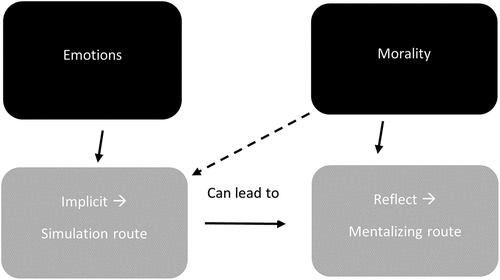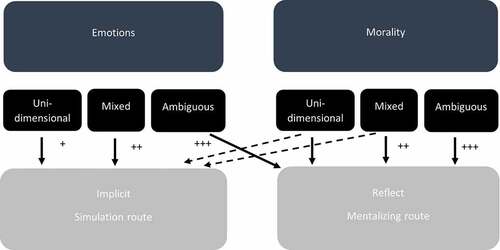Figures & data
Box 1. A taxonomy for mixed and ambiguous emotions and morality. Note that the boundaries between these categories are more fuzzy than the description in Box 1 suggests. Still the taxonomy can be helpful to use as a starting point and to use a common nomenclature across scientific disciplines.
Figure 1. A simplified scheme of the relation between implicit simulation of emotional or moral content, and explicit, reflective comprehension of emotions and morality. Emotions pair most with simulation, whereas morality understanding relies mostly on mentalizing. However, emotions can be reflected upon, activating the mentalizing route, and morality can be perceived implicitly, activating the simulation route.

Figure 2. The MA-EM model for the observation of emotions and morality. The model predicts that emotions and moral intentions (‘morality’) are processed neurally by mapping onto a simulation route (left) and onto a mentalizing route (right). Separate predictions are made for unidimensional, mixed, and ambiguous emotions and morality. For the taxonomy see Box 1, for specific hypotheses see the text. The ‘+’ signs signal the predicted strength of an effect: the more ‘+,’ the stronger the hypothesized effect is.

